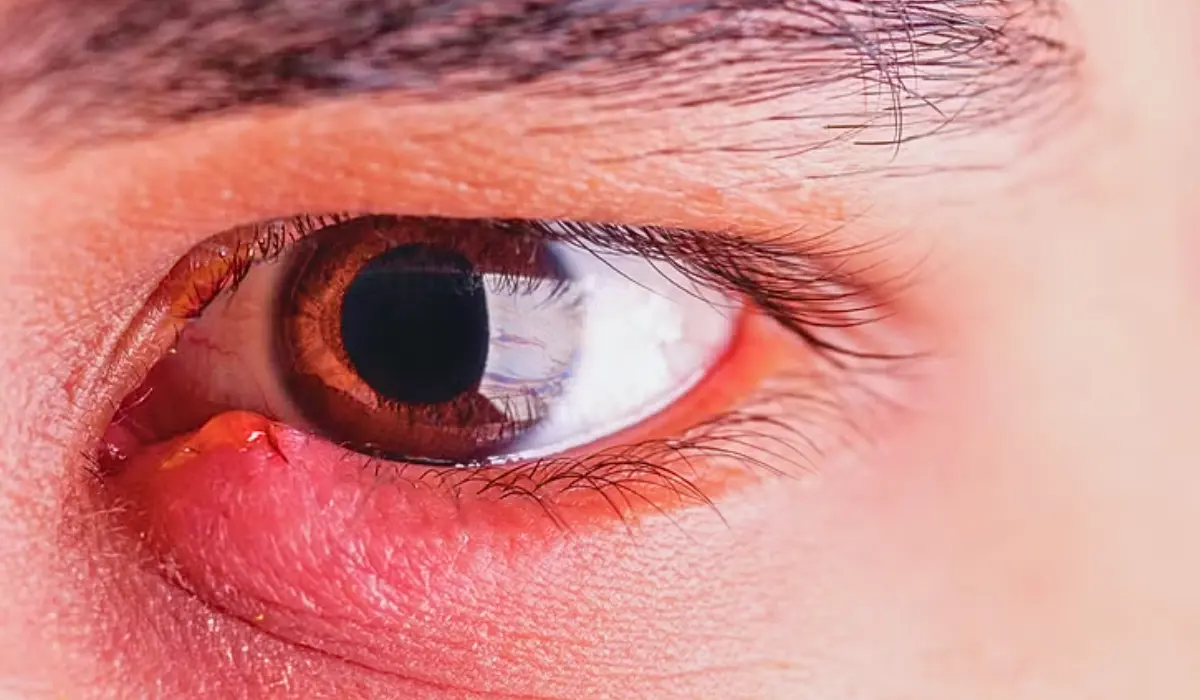Have you ever noticed a red, sore bump on your eyelid and wondered what it could be? You might have blepharitis or a stye. While they can look similar, blepharitis and styes are actually two different conditions. Knowing how to tell them apart is important for getting the right treatment.
In this article, we’ll explore the key differences between blepharitis and stye. We’ll look at what causes each condition, the symptoms to watch out for, and what you can do to find relief. By the end, you’ll be well-equipped to handle any angry red bump eyelid that comes your way.
Let’s dive in and shed some light on these common but often misunderstood eye issues. After all, the more you know, the better you can take care of those precious peepers.
Blepharitis
Blepharitis is a chronic condition, which means it can last for a long time or come back repeatedly. It’s an inflammation of the eyelids, usually caused by blocked oil glands or an overgrowth of bacteria.

There are two main types:
- Anterior blepharitis affects the outside front of the eyelid where the eyelashes attach
- Posterior blepharitis involves the inner eyelid where the oil glands are located.
The Common symptoms of blepharitis include:
- Red, swollen eyelids
- Itching or burning sensation
- Crusty sediment at the bottom of the eyelashes
- Dry eyes or excessive tearing
- Sensitivity to light
- Blurred vision
If you have blepharitis, you might feel like there’s something in your eye or that your eyelids are sticking together. It’s not contagious, but it can be uncomfortable and unsightly. Blepharitis treatment usually involves keeping the eyelids clean, warm compresses, and sometimes antibiotics or other medications.
Stye
Styes are also called hordeolum. A stye may look a lot like a pimple on your eyelid. It happens when an oil gland or eyelash follicle gets clogged and infected, usually by bacteria. They show up as a painful, red bump eyelid.
Symptoms of a stye include:
Styes usually get cured on their own within one or two weeks. In the meantime, you can use warm compresses and gentle cleansing to help speed up healing and relieve discomfort. Don’t try to pop or squeeze the stye, as this can spread the infection.
Blepharitis vs Stye: Key Differences
While blepharitis and styes share some similarities, there are a few key differences that can help you tell them apart. Let’s take a look at blepharitis vs stye to know more about their differences.
- Location: Blepharitis affects the eyelid margins, while styes are localized bumps on the edge of the lid.
- Duration: Blepharitis is chronic and can last for weeks or months, while styes usually clear up within a week or two.
- Symptoms: Blepharitis causes widespread redness, flaking, and itching, while styes are more painful and focused on one spot.
- Causes: Blepharitis is often due to blocked oil glands or bacterial overgrowth, while styes are caused by an infected oil gland or follicle.
Knowing these differences can help you identify which condition you have and seek appropriate treatment. If you’re not sure, it’s always best to check with your eye doctor for a proper diagnosis.
When to See a Doctor?
In most cases, both blepharitis and styes can be managed at home with good eyelid hygiene and warm compresses. However, there are some situations where you should see an eye doctor:
- Your symptoms don’t improve after a few days of home treatment
- The redness and swelling spread beyond your eyelid
- You have severe pain or vision changes
- You get recurring styes or blepharitis flare-ups
Your doctor can prescribe stronger treatments if needed, such as antibiotics or steroid eye drops. They can also rule out other eye conditions that may be causing your symptoms, such as pink eye or dry eye syndrome.
Prevention Tips
While you can’t always prevent blepharitis or styes, there are some things you can do to lower your risk:
By taking good care of your eyelids and practicing proper hygiene, you can help keep blepharitis vs stye at bay and maintain healthy, comfortable eyes.
Conclusion
In the world of red bump eyelid conditions, blepharitis and styes are two common culprits. While they may look similar at first glance, they have some key differences in terms of symptoms, causes, and duration.
Blepharitis is a chronic inflammation of the eyelids that can cause redness, itching, and flaking. Styes, on the other hand, are painful, localized bumps caused by an infected oil gland or hair follicle. Knowing how to tell blepharitis vs stye apart can help you get the right treatment and find relief faster.
Most of the time, you can manage blepharitis and styes at home with a combination of good eyelid hygiene, warm compresses, and patience. However, if your symptoms are severe, prolonged, or keep coming back, it’s important to see an eye doctor for a proper diagnosis and treatment plan. They can help you get to the root of the problem and prevent future flare-ups.
By understanding the differences between blepharitis and styes, and taking steps to keep your eyelids clean and healthy, you can help keep your eyes looking and feeling their best. No one wants to deal with a red, angry bump on their eyelid, but with the right knowledge and care, you can give blepharitis vs stye a run for their money.
Now that you know more about these common eyelid conditions, do you have any tips or experiences to share? What has worked for you in preventing or treating blepharitis or styes? Let us know in the comments below!